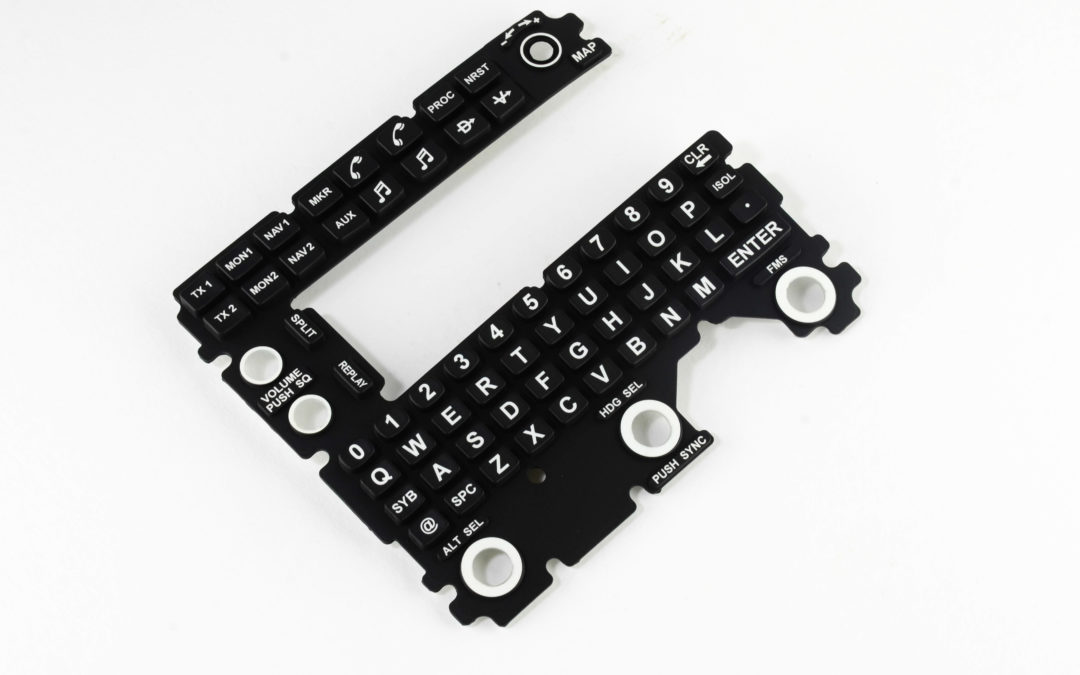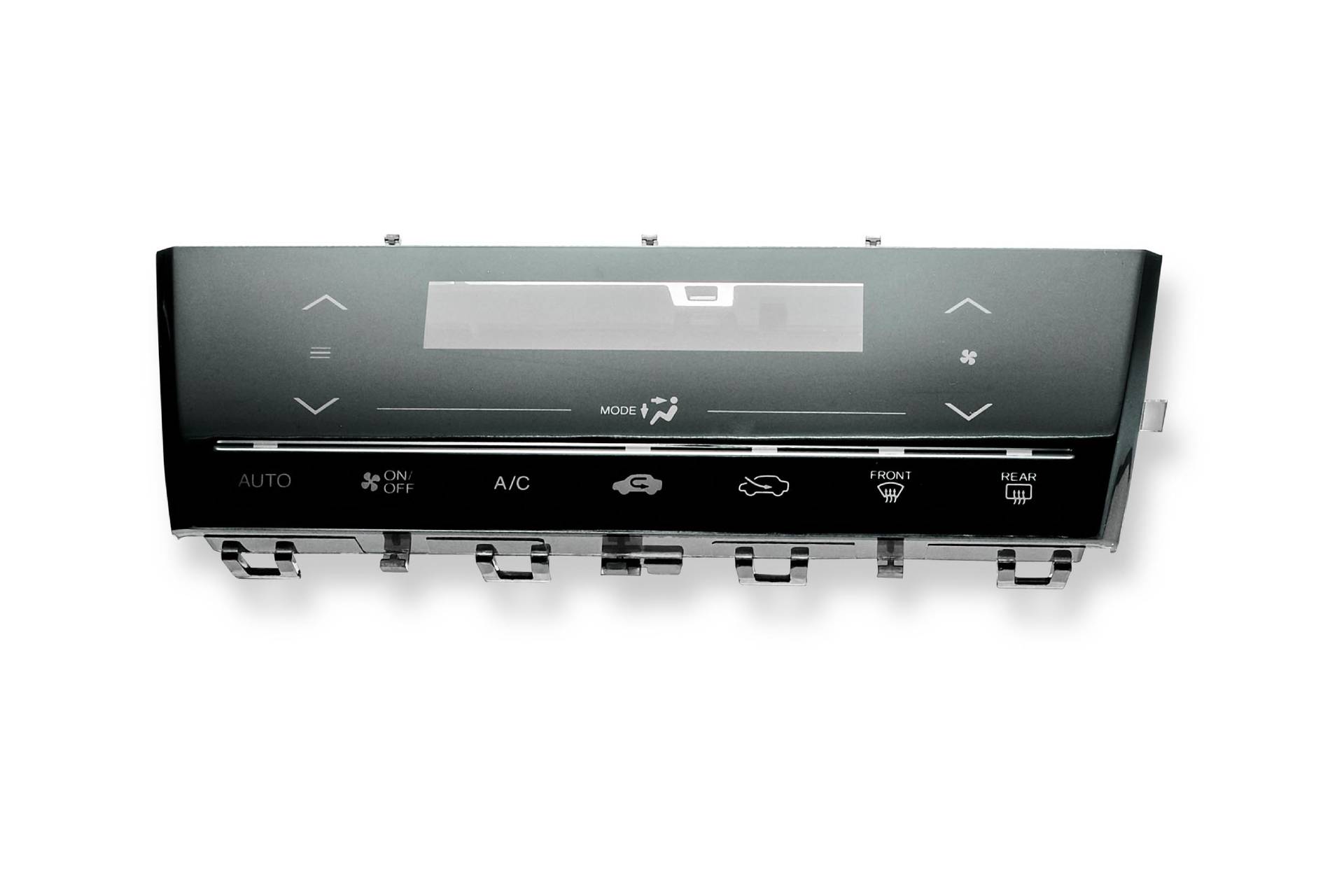10 unique uses of Rubber Keypads beyond home devices
Uncovering the Diverse Utilizes and Enters of Rubber Keypads in the Innovation Landscape Today
Rubber keypads have developed themselves as crucial parts in various technical applications. Their flexibility makes them suitable for consumer electronics, industrial devices, and medical devices. As these keypads proceed to progress, brand-new personalization choices and style trends arise. This prompts a closer evaluation of their advantages and making processes. Comprehending these elements may expose why rubber keypads continue to be a favored option in the innovation landscape. What lies ahead for this flexible component?
Introduction of Rubber Keypads
Rubber keypads work as an essential element in various digital tools, providing a tactile user interface for individual interaction. These keypads are typically made from silicone or rubber materials, which give versatility and sturdiness. Their style often integrates increased letters or signs, boosting usability by permitting users to really feel the secrets - Rubber Keypads. Rubber keypads are immune to dust, moisture, and wear, making them ideal for demanding atmospheres
Moreover, they can be customized relating to shape, size, and shade, permitting suppliers to produce one-of-a-kind interfaces customized to details items. The production procedure frequently involves techniques such as molding and printing, making sure premium output. Consequently, rubber keypads not only enhance functionality but additionally add to the general appearances of the gadget. With these attributes, rubber keypads stay a prominent choice for both customers and producers, highlighting their importance in the technology landscape.
Usual Applications in Customer Electronics
While lots of electronic devices depend on touchscreens for user communication, rubber keypads remain to play a crucial role in customer electronics. These keypads are widely used in devices such as remotes, pc gaming controllers, and house appliances, where tactile feedback improves individual experience. Their longevity and resistance to wear make them excellent for tools regularly subjected to heavy use.
Rubber keypads are likewise popular in mobile gadgets and mobile phones, where compact styles require receptive and reputable input methods. The capability to customize the shape and structure of rubber keypads enables makers to develop one-of-a-kind designs that interest customers. Additionally, the soft touch of rubber gives comfort throughout prolonged usage, making these keypads a preferred choice for gadgets needing extended interaction. Generally, rubber keypads remain a vital part in the customer electronic devices landscape, incorporating capability with straightforward attributes.
Duty in Industrial and Medical Devices
Rubber keypads play a necessary duty in both commercial and clinical equipment, using longevity and dependability in requiring atmospheres. In industrial setups, they are usually used in control panels and machinery, improving driver communication with complex systems. Likewise, in the clinical field, rubber keypads promote easy to use user interfaces for tools that call for precision and health.
Industrial Tools Applications
Keypads play a crucial function in the performance and individual experience of commercial and clinical devices. In commercial setups, rubber keypads supply a durable interface for equipment and control systems, enabling drivers to quickly input commands and change setups. Their resistance to dirt, wetness, and chemicals guarantees dependability under harsh problems regular of manufacturing facilities and manufacturing plants. Furthermore, the tactile feedback offered by rubber keypads enhances user interaction, minimizing the chance of input errors. Along with conventional equipment, these keypads are important in automated robotics and systems, where precision is vital. The versatility of rubber keypads in various commercial applications highlights their significance in boosting functional effectiveness and guaranteeing safety and security in complex atmospheres.
Medical Tool Integration
As clinical tools increasingly require straightforward user interfaces, the integration of rubber keypads has actually come to be vital in guaranteeing reliable interaction in between medical care professionals and equipment. These keypads offer responsive comments, facilitating instinctive operation even in high-pressure settings. Their resilience and resistance to severe cleaning representatives make them ideal for clinical settings, where hygiene and long life are important. Furthermore, rubber keypads can be customized to include various forms, dimensions, and shades, improving aesthetic recognition and accessibility for individuals. This adaptability permits the production of specialized controls tailored to certain medical features, boosting overall efficiency. The function of rubber keypads in medical tool combination not only improves capability however additionally advertises patient security and functional dependability in medical care environments.
Modification Options and Design Trends

Current design patterns highlight minimalism and comfort designs, prioritizing individual comfort and user-friendly communication. Custom-made logos and branding can be incorporated right into keypads, allowing business to keep a cohesive brand identification throughout their items. Additionally, improvements in producing strategies, such as silicone molding, have actually made it simpler to achieve complex layouts and individualized formats.
Benefits of Rubber Keypads Over Various Other Kinds
Rubber keypads are also understood for their sturdiness and resistance to environmental elements. They can stand up to wetness, dust, and temperature variations, making them ideal for outside or commercial setups. Furthermore, rubber keypads are commonly quieter than their plastic or metal counterparts, reducing environmental pollution in common environments.
Additionally, the cost-effectiveness of rubber keypads makes them an eye-catching alternative for producers. Their lightweight nature adds to lower shipping prices, while their personalized styles cater to details branding requirements. Generally, rubber keypads stand for a flexible and dependable remedy in the technology landscape.
Production Techniques for High Quality and Resilience
In the manufacturing of rubber keypads, the option of suitable materials and molding processes plays a crucial duty in determining general high quality and durability. Different molding methods, such as compression and injection molding, considerably influence the end product's performance. Recognizing these elements is important for accomplishing excellent outcomes in rubber keypad production.
Molding Procedures Clarified
A selection of molding procedures play a vital he has a good point duty in the production of rubber keypads, guaranteeing both high quality and toughness. One of the most common methods include compression molding, transfer molding, and injection molding. Compression molding includes putting rubber in a heated mold and mildew, where heat and stress shape it into the desired kind. Transfer molding permits even more precise control over product circulation and is suitable for intricate layouts (Rubber Keypads). Injection molding, understood for its speed and efficiency, infuses molten rubber right into a mold and mildew under high pressure, creating high-volume get rid of regular top quality. Each approach offers unique advantages, influencing variables such as production layout, rate, and price flexibility, inevitably affecting the efficiency and life-span of rubber keypads in various applications
Product Choice Importance
Product option plays a vital role in the manufacturing of rubber keypads, directly influencing their performance and sturdiness. The option of rubber substances, such as silicone or polyurethane, impacts responsive feedback, resistance to put on, and ecological longevity. Premium materials ensure that keypads can hold up against comprehensive use, keeping their performance in time. Furthermore, the formulation of rubber affects its resistance to temperature level changes and direct exposure to chemicals, which are critical for devices in different settings. Using advanced production strategies, such as compression or injection molding, further enhances the architectural honesty of keypads. Ultimately, cautious product choice and production processes contribute considerably to the general high quality, durability, see this and user complete satisfaction of rubber keypads in today's innovation landscape.
Future Fads in Rubber Keypad Innovation
As technology continues to evolve, the future of rubber keypad development appears appealing, with advancements positioned to boost functionality and user experience. One noteworthy trend is the integration of touch-sensitive innovation, allowing capacitive responses that simulates the feel of standard buttons while offering enhanced responsiveness. Furthermore, the advancement of antimicrobial products is most likely to acquire traction, resolving health worries in shared and public tools.
Customization options are expected to increase, here are the findings permitting individuals to personalize crucial formats and responsive responses, thus providing to varied demands. The unification of clever modern technology, such as connectivity attributes, might additionally arise, permitting rubber keypads to engage with other tools perfectly. As makers concentrate on sustainability, green materials are anticipated to come to be much more prevalent, straightening with global environmental goals. Overall, these fads guarantee to reinvent rubber keypads, making them much more versatile, user-friendly, and ecologically conscious in the technology landscape.
Often Asked Concerns
How Do Rubber Keypads Contrast in Cost to Other Keypad Kinds?
Rubber keypads generally use a cost-effective option compared to various other keypad kinds, such as membrane layer or mechanical choices. Their reduced manufacturing costs and durability make them an appealing choice for different applications in technology.
What Are the Ecological Effects of Rubber Keypad Manufacturing?

The ecological effects of rubber keypad production consist of source depletion, energy consumption, and air pollution from making processes. In addition, incorrect disposal can bring about plastic waste, adding to environmental degradation and damaging ecological communities otherwise managed sensibly.
Can Rubber Keypads Be Used Outdoors?
Rubber keypads can be utilized outdoors due to their longevity and resistance to weather elements. Their longevity may depend on the top quality of products utilized and the certain environmental conditions they are subjected to.
What Upkeep Is Required for Rubber Keypads?
Rubber keypads need regular cleaning to remove dirt and debris, regular examination for deterioration, and security from extreme temperature levels. Ensuring appropriate storage conditions can extend their life expectancy and preserve functionality in time.
Just How Do Rubber Keypads Perform in Extreme Temperatures?
Rubber keypads generally keep performance in extreme temperatures, displaying strength to both warm and cold. Prolonged exposure may trigger material destruction, impacting their responsive reaction and total efficiency in harsh settings.
Rubber keypads serve as an essential component in various digital gadgets, using a tactile user interface for user communication. While many electronic tools count on touchscreens for individual communication, rubber keypads proceed to play a necessary duty in customer electronic devices. Furthermore, the soft touch of rubber provides convenience during prolonged use, making these keypads a recommended selection for devices requiring extended interaction. Despite the expanding range of keypad products available, rubber keypads provide distinct benefits that make them a recommended option in lots of applications. Rubber keypads usually use a cost-efficient option contrasted to various other keypad kinds, such as membrane layer or mechanical options.